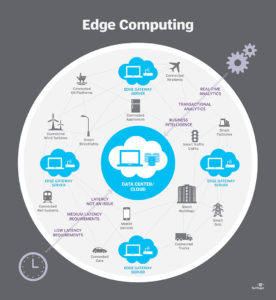Today’s consumers expect speed, consistency, automation, accurate tracking and real-time notifications. It can be a challenge for service industry businesses to find or develop the tools they need to deliver on these expectations. Many business owners are incorporating Internet of Things (IoT) tools and platforms in an effort to give customers what they want.
The Benefits of IoT for the Service Industry
The Internet of Things offers several options for improving service. These include advanced process automation, asset tracking, predictive maintenance and more. There’s one capability, however, that provides the greatest benefit to the service industry. This is known as service tracking.
What is Service Tracking?
Service tracking provides real-time visibility and updates on a task’s progression. This is useful in a wide variety of industries, from restaurants to salons to repairs and more. According to IoT For All, service tracking generally follows these steps to track a task:
- Sensors embedded in equipment or in cameras observe the task, looking for specific indicators that the task has progressed.
- The data gathered by the sensors is transmitted via the internet.
- Observational data is fed into a centralized platform on the cloud and is transformed into insight about the task’s progression.
- Front-end software applications share data with stakeholders. For example, you might get a notification that your food has been delivered or your oil change is complete.
How Service Tracking Makes the Service Industry More Efficient
Using IoT to automate service processes creates efficiencies that benefit both the customer and your business. These include:
- Lower wait times
- A better customer experience
- Increased operational efficiency and profitability
How could the Internet of Things make your business more profitable? The Vaultas IT Ecosystem makes IoT integration easy. Contact us today.
Vaultas is a technology ecosystem provider that facilitates direct access to any network or service provider. Our services include colocation, cloud, hybrid IT solutions, connectivity, communication and collaboration including UCaaS and CCaaS, disaster recovery and business continuity, hosting, consulting, energy conservation and much more.
Our primary ecosystem access points are located in the Twin Cities of Minneapolis and St. Paul, as well as Alexandria and St. Cloud, MN, and Milwaukee, WI, with remote access from anywhere in the world. Contact us to get started.



